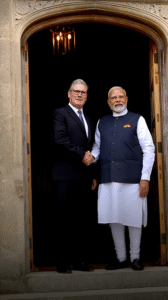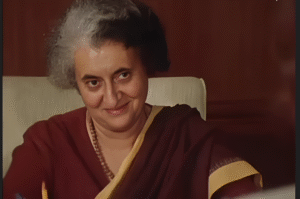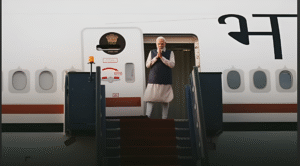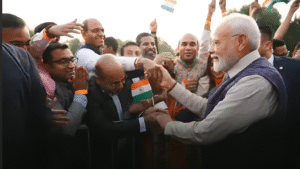
Prime Minister Narendra Modi has achieved a significant milestone in Indian political history by becoming the country’s second-longest serving Prime Minister, surpassing the tenure of former Prime Minister Indira Gandhi. This landmark comes as a testament to Modi’s enduring popularity, political influence, and strong electoral mandate across three consecutive terms.
As of July 26, 2025, Narendra Modi has officially served over 6,879 days in office overtaking Indira Gandhi, who served for a combined total of approximately 6,878 days across two non-consecutive terms (1966–77 and 1980–84). Modi’s tenure began on May 26, 2014, when he was sworn in as India’s 14th Prime Minister following a historic victory by the Bharatiya Janata Party (BJP) in the general elections. Since then, he has been re-elected twice—in 2019 and 2024—solidifying his stature as a central figure in Indian politics.



indira Gandhi, India’s first and only female Prime Minister, was a dominant political force during her time, known for both her bold policies and controversial decisions like the Emergency (1975–77). Modi’s surpassing of her record marks a symbolic shift in Indian political dynamics, reflecting the BJP’s sustained hold on power and the transformation of the political landscape over the past decade.
During his tenure, Modi has implemented several ambitious reforms and initiatives. His key policies include the Goods and Services Tax (GST), Make in India, Digital India, and the Swachh Bharat Abhiyan. In foreign affairs, he has positioned India as a key global player, forging strategic alliances and enhancing India’s profile on the world stage. Under his leadership, India has also seen a rise in national pride, digital connectivity, and infrastructure development, although critics point to increasing social polarization and concerns about democratic institutions.
Narendra Modi’s Enduring Legacy: From Pandemic Leadership to Political Milestone

Modi’s leadership during the COVID-19 pandemic, the rollout of the nationwide vaccination drive, and the handling of major geopolitical tensions—including those with China and Pakistan—have all added to his complex legacy. Furthermore, the abrogation of Article 370 in Jammu & Kashmir and the implementation of the Citizenship Amendment Act (CAA) have been both lauded and criticized, reflecting the divisive nature of his governance style.
While Jawaharlal Nehru, India’s first Prime Minister, still holds the record for the longest-serving PM with a tenure of over 17 years (6,130 days), Narendra Modi is now the closest any leader has come to that record in independent India’s history. If Modi completes his third term, which runs until 2029, he will surpass Nehru as the longest-serving Prime Minister.
Political analysts see this development as more than just a numerical milestone. It highlights the ideological shift from the Congress-dominated post-independence era to a new phase where the BJP, under Modi’s leadership, has redefined the center of Indian politics.
As Modi continues into his third term, the nation watches closely to see how his policies and political strategies shape India’s future. His achievement in surpassing Indira Gandhi is not just a historical footnote but a moment that underscores the deep impact he has had—and continues to have—on the Indian political landscape.
